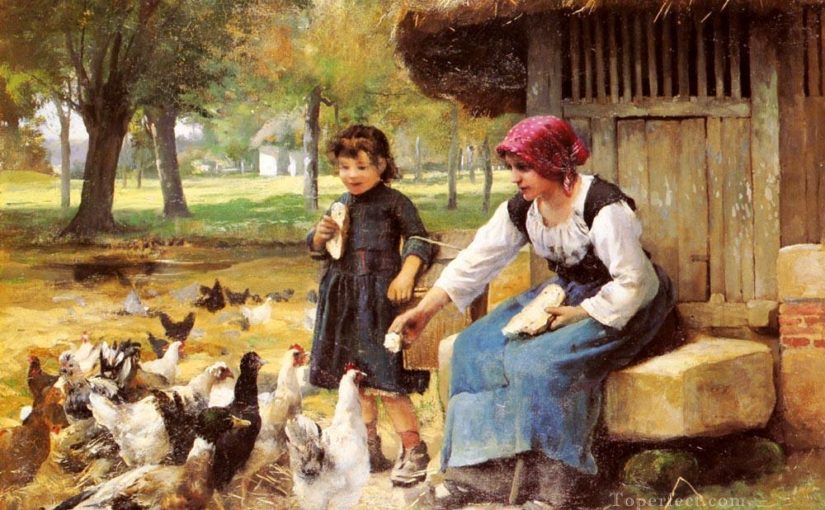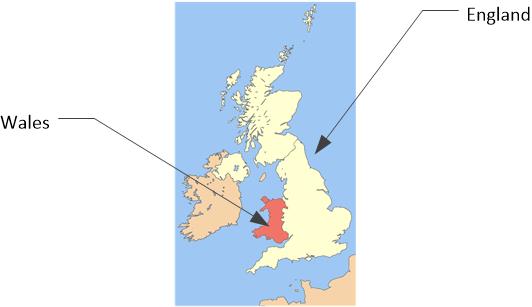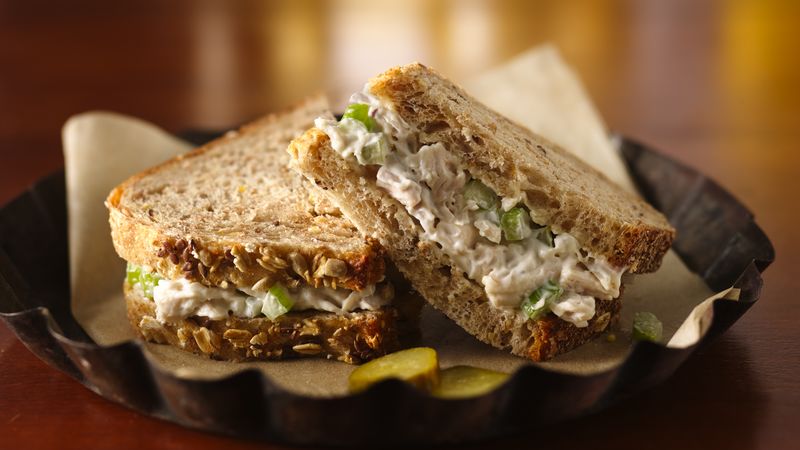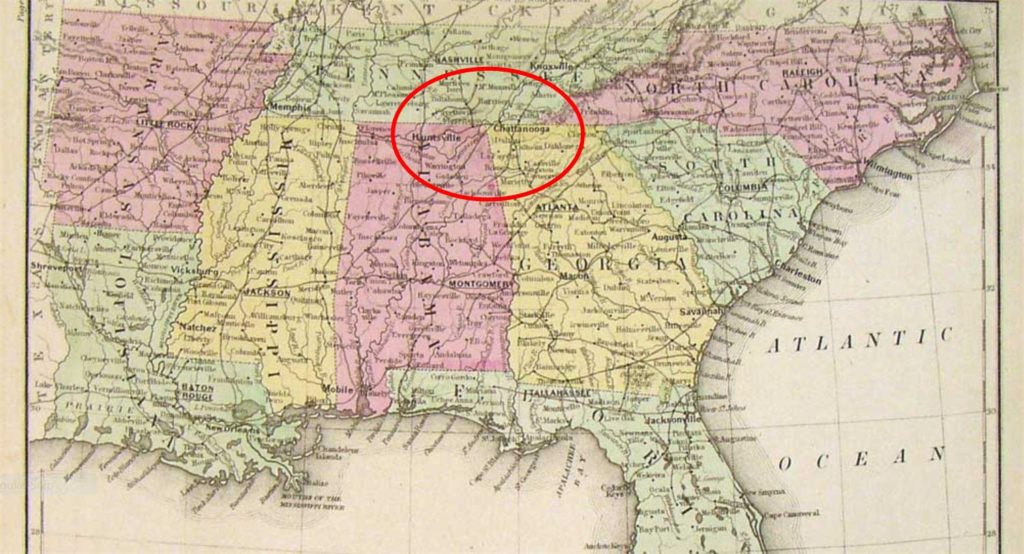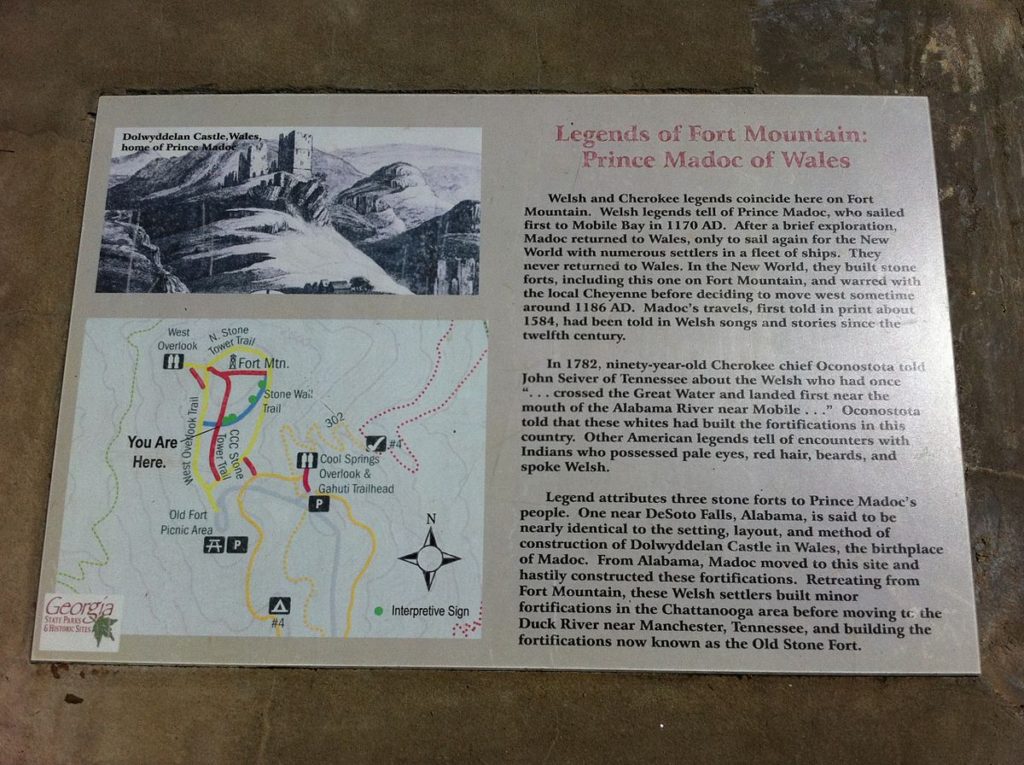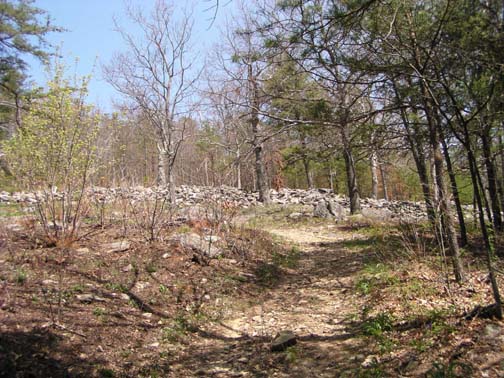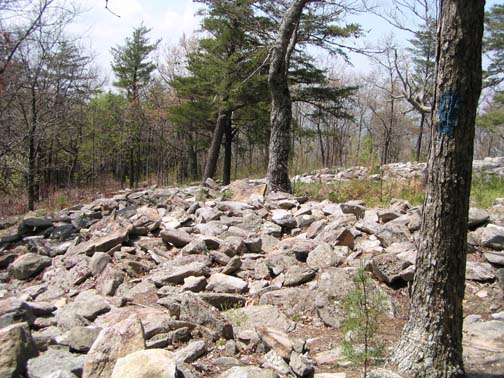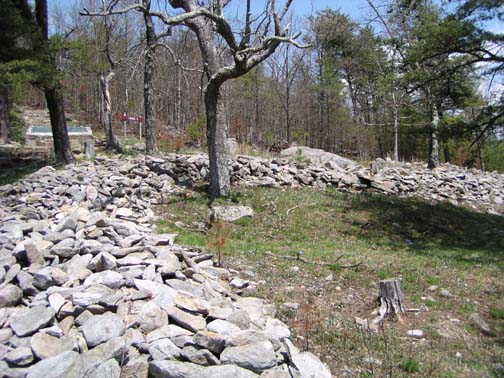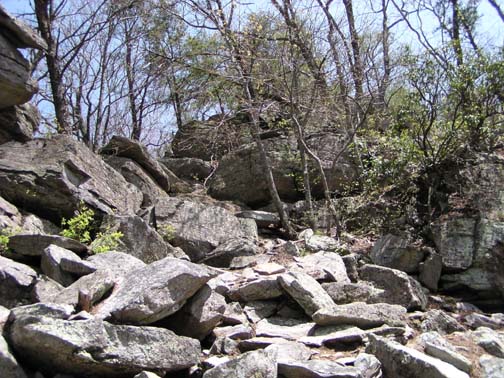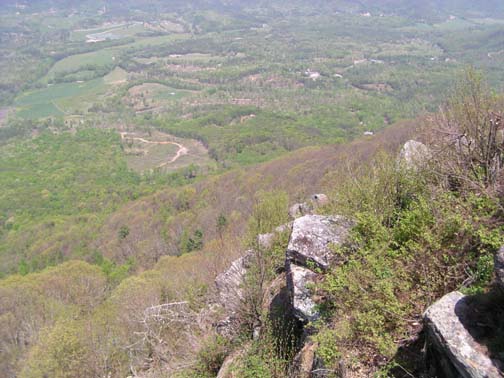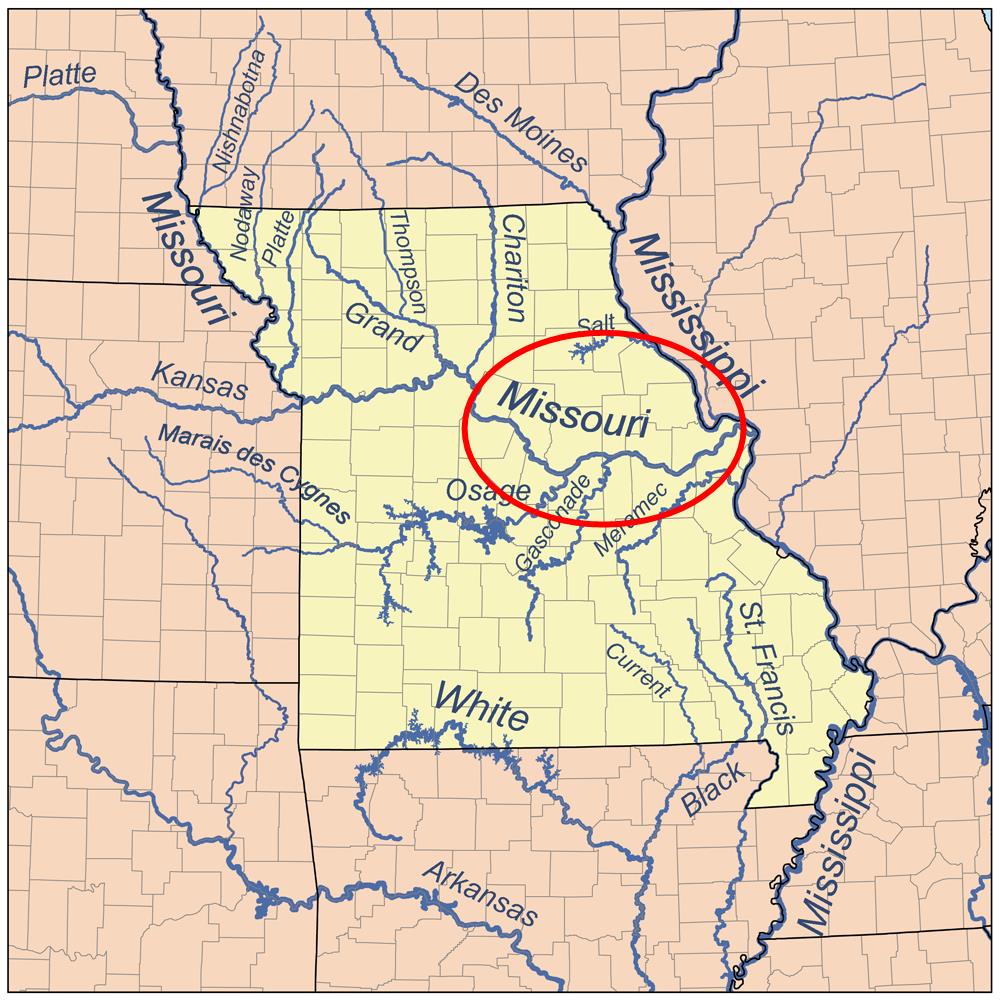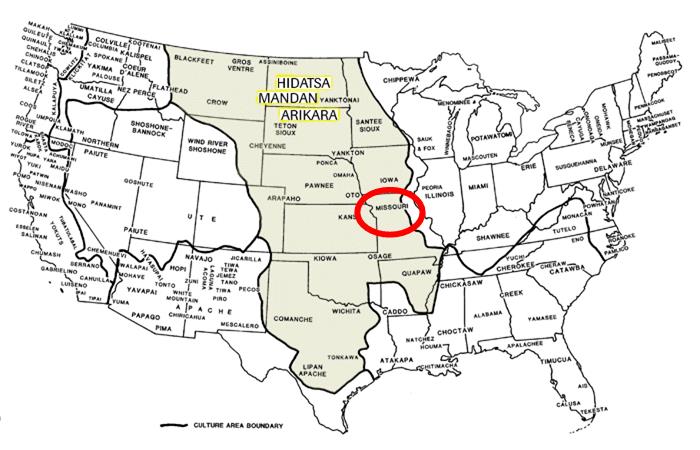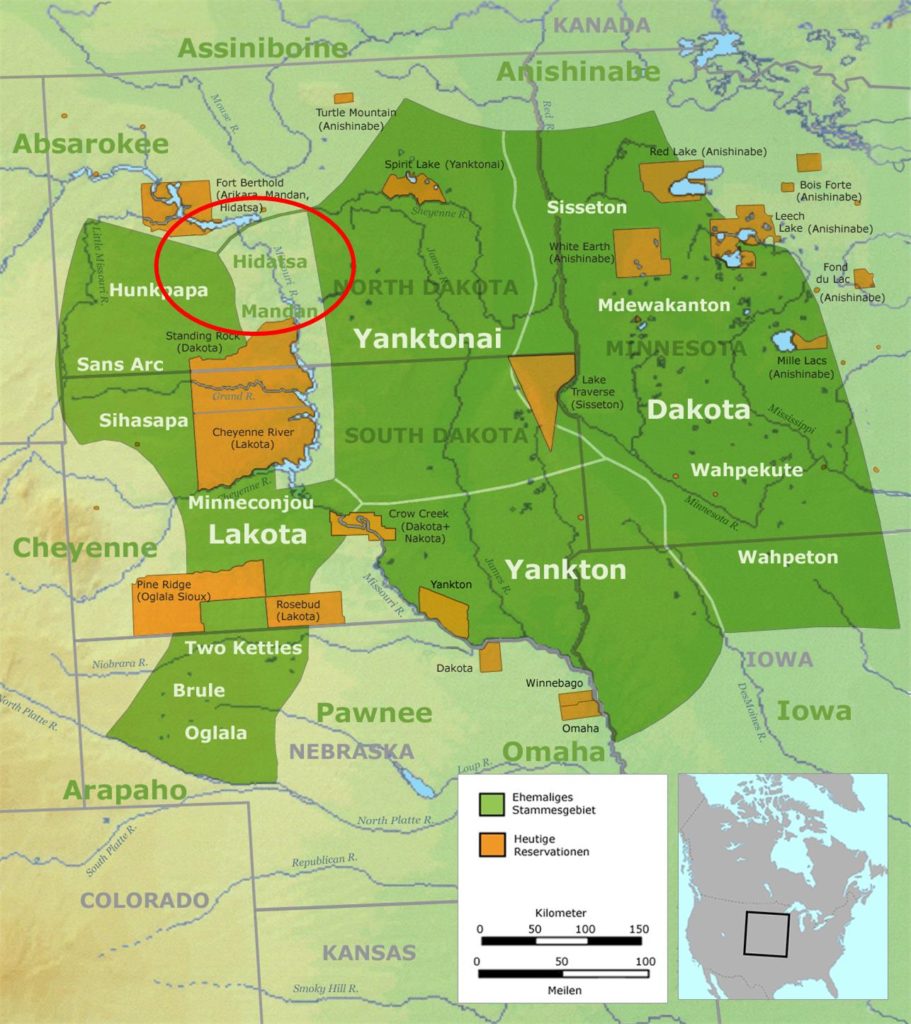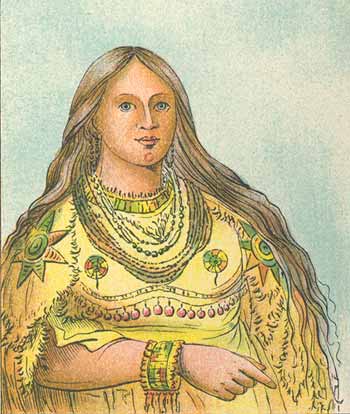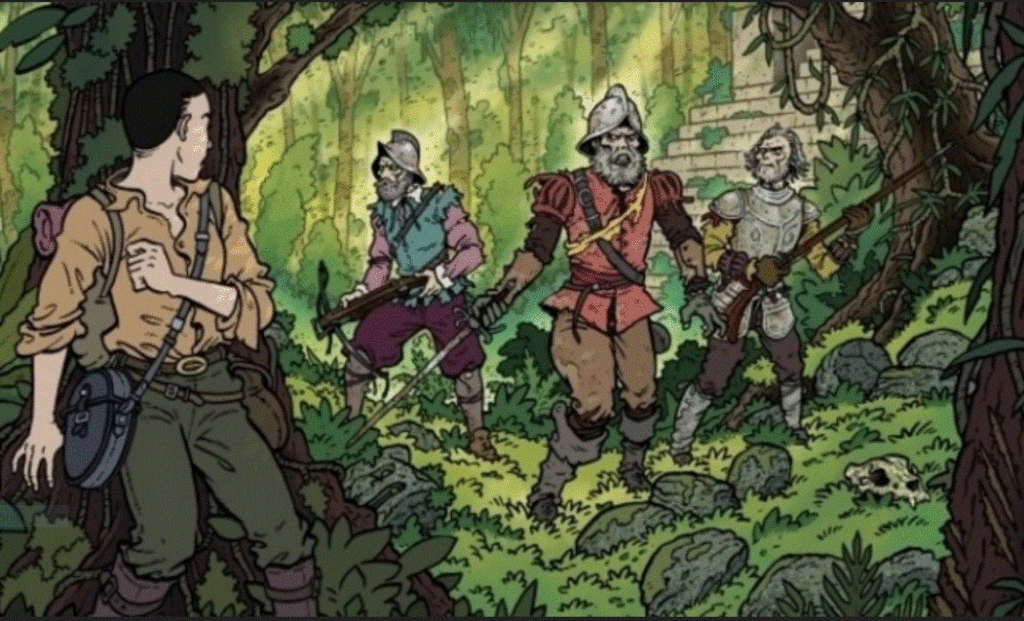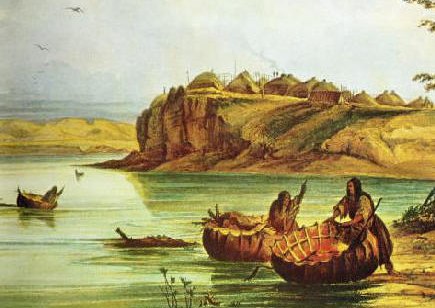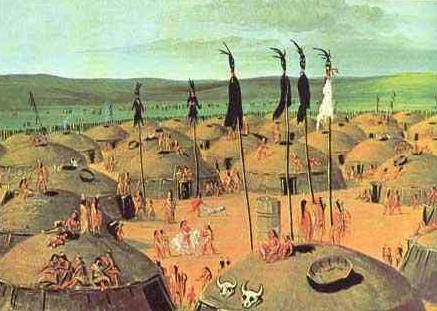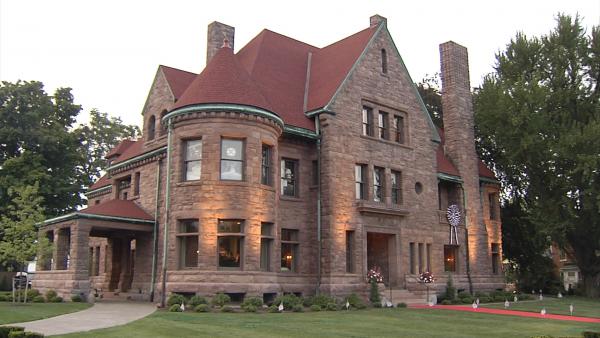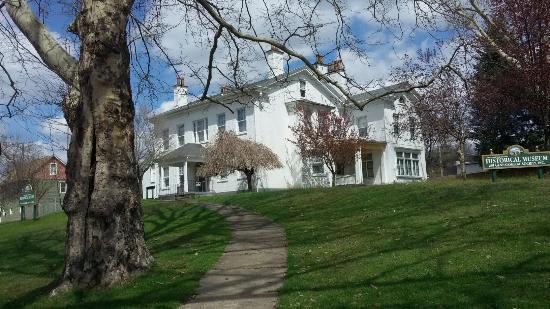The word medieval is often treated as synonymous with filth, lawlessness and brutality. In particular the recent actions of ISIS and their treatment of prisoners have been called 'medieval’ by journalists, commentators and bloggers alike. But why do we do this, and is it fair? -History Today
While many of us are grateful for the 40-hour work week, Medieval peasants worked far less than even that.
When professor Juliet Schor released her book, The Overworked American: The Unexpected Decline of Leisure, the average American was shocked. According to her research, they were working more days and taking fewer vacation days than a medieval peasant.
Americans are working harder, and being rewarded less, than a Medieval serf.
Now, her scholarly presentation was correct. American life has migrated far, far away from what it was like during Medieval times. There are good and bad things about this. But we need to put things into perspective. Because most Americans have a very warped idea of what life was like in the past.
American Misconceptions…
Americans mistakenly believe that Medieval life was far, far different than the lives we live today. I counter the opposite. Aside from technology and medicine, socially and economically, we are identical.
Let’s get rid of some misconceptions…
Typical Misconception 1. Peasants were a single class of people who were more or less equal to one another. It's easy to think that people in the Middle Ages were easily divided into very broad classes: royals, nobles, knights, clergy, and toiling peasants at the very bottom. But just because you didn't have "king," "lord," "sir," "father," or "brother" (or their female analogs) in front of your name doesn't mean you weren't concerned with your own social standing. There are vast classes of people whom, today, we might generally refer to as "peasants," but there were actually various classes of people within that broad category. Mortimer points out that, in 14th-century England, for example, you have your villeins, people bonded to a particular lord's land. Villeins were not considered free folk, and they could be sold with the lord's land. And free folk were of a variety of social and economic classes. A freeholder, for example, might become successful enough to rent a lord's manor, essentially acting as a lord himself. And, in a village, a few families might hold the majority of the political power, supplying most of the local officers. We may tend to think of these people as "peasants," but they had much more complicated ways of thinking of themselves, with all the class anxiety that goes with that.
Much like today. American society is stratified. America hardly has a middle class. Most of the wealth is concentrated in the hands of a few elite. The rest of us fight against each other for the “table scraps” thrown to the side by “trickle down economics”.
Misconception 2. Inns were public houses with big common halls below and rooms above. There are few images as firmly rooted in pseudo-Medieval fantasy as the tavern inn. You and your party enjoy a few flagons of ale in the main room, hear all the local gossip, then go up to your private rented chamber where you'd sleep (alone or with a lover) on a lumpy mattress. That image isn't wholly fiction, but the truth is a bit more complicated — not to mention interesting. In Medieval England, if you combined a city inn with an alehouse, you'd probably get something resembling that fantasy inn. There were inns where you could rent a bed (or, more likely, a space in a bed), and these inns did have halls for eating and drinking. But these were not public houses; innkeepers were generally permitted to serve food and drink only to their guests. And, Mortimer points out, you would likely find a single room with several beds, beds that could fit up to three people. It was only in the most upscale inns that you'd find chambers with just one or two beds. There were establishments for drinking in these cities as well: taverns for wine and alehouses for ale. Of the two, alehouses were the rowdier establishments, more likely to function as your Medieval Mos Eisley. But ale and cider were often made at home as well; a husband might expect his wife to be skilled in brewing. The Gieses note in Life in a Medieval Village that a tavern in an English village was often someone's home. Once your neighbor opened up a fresh batch of ale, you might go to their house, pay a few pennies, and sit and drink with your fellow villagers. There are other options for accommodations as well. Travelers could expect the hospitality of people of equal or lesser social class, enjoying their food and beds in exchange for tales from the road and a tip. (Mortimer says that, if you were lucky enough to stay with a 14-century merchant, the digs were much nicer than any inn.) Or you might go to a hospital, which was not just for healing, but also for hospitality.
Like America today, there are all sorts of accommodation. Is the modern housing APPs any different from the medieval arrangement? It’s just a modern equivalent.
Misconception 3. You would never see a woman engaged in a trade such as armorer or merchant. Certainly, some fantasy stories will cast women in equal (or relatively equal) positions to men, carrying out the same sorts of trades that men might carry out. But in many fictional stories, a woman who makes armor or sells good would seem out of place — although this does not universally reflect Medieval reality. In England, a widow could take up the trade of her dead husband — and Mortimer specifically cites tailor, armorer, and merchant as trades open to widows. Some female merchants were actually quite successful, managing international trading ventures with impressive capital. Women engaged in criminal activity as well, including banditry. Many criminal gangs in Medieval England consisted of families, including wives with their husbands and sisters with their brothers.
Men and women shared and swapped roles in the past, much we do today. There is nothing new or progressive about that.
Misconception 4. People had horrible table manners, throwing bones and scraps on the floor. Sorry, even in the Middle Ages, members of polite society, from kings to villeins, followed certain etiquette, and that etiquette involved good table manners. In fact, depending on when and where and with whom you were eating, you might have to follow very strict procedures for eating and drinking. Here's a tip: If a lord passes you his cup at the dinner table, it's a sign of his favor. Accept it, backwash and all, and pass it back to him after you've had a sip.
Manners are part of the human condition. While they might vary from society to society, manners follow us everywhere.
Misconception 5. People distrusted all forms of magic and witches were frequently burned. In some fantasy stories, magic is readily accepted by everyone as a fact of life. In others, magic is treated with suspicion at best or as blasphemy at worst. You might even hear the Biblical edict, "Thou shalt not suffer a witch to live." But not all claims of magic in the Middle Ages were treated as heresy. In her essay "Witches and the Myth of the Medieval 'Burning Time,'" from Misconceptions About the Middle Ages, Anita Obermeier tells us that during the 10th century, the Catholic Church wasn't interested in trying witches for heresy; it was more interested in eradicating heretical superstitions about "night-flying creatures." And in 14th-century England, you might consult a magician or a witch for some minor "magical" task, such as finding a lost object. In Medieval England, at least, magic without any heretical components was tolerated. Eventually, the late 15th century would give rise to the Spanish Inquisition, and we do see witches hunted down. Witch burnings weren't unheard of in the Middle Ages, but they weren't common, either. Obermeier explains that, in the 11th century, sorcery was treated as a secular crime, but the church would issue several reprimands before it would resort to burning. She puts the first burning for heresy at 1022 in Orleans and the second at 1028 in Monforte. It's rare in the 11th and 12th centuries, but becomes a more common punishment in the 13th century for relapsed heretics. However, it depends where you are. In the 14th century, you probably won't be burned as a witch in England, but you may very well get the stake in Ireland.
Much like today. You might have trouble finding a practitioner of the Black Arts in the Southern American states, but you won’t have problems in New Orleans. Or Los Angles. Or Detroit. Or New York. Or Baltimore.
Misconception 6. Men's clothing was always practical and functional. Yes, Medieval people of various classes were interested in fashion, and sometimes fashion — particularly men's fashion — got pretty absurd. Early clothing is more functional, but during the 14th century, men's fashions in England were both body-bearing and rather experimental. Corsets and garters were common for men, and increasingly, popular fashions encouraged men to show off the shape of their hips and legs. Some aristocratic men wore gowns with sleeves so long they were in danger of tripping on the cuffs. It became fashionable to wear shoes with extraordinarily long toes — one such shoe, imported from Bohemia, had twenty-inch toes that needed to be tied to a man's garters. There was even a fad of wearing one's mantle so that the head went through the arm hole rather than the head hole, with the sleeves functioning as a voluminous collar. It's also important to note that fashions would trickle down from royalty, through the aristocracy, and down to the common folk. In the seasons after a fashion appeared among the nobility, a less expensive version would appear among those of lesser stations. In fact, sumptuary laws were passed in London to prevent people from dressing above their stations. For example, a common woman in 1330s London was not permitted to line her hood with anything but lambskin or rabbit fur, or risk losing her hood.
Much like today. The fashions might change, but the importance of having them is a time honored standard.
Misconception 7. Servants were all low-class people. Actually, if you were a high-ranking individual, chances are that you had high-ranking servants. A lord might send his son to serve in another lord's manor — perhaps that of his wife's brother. The son would receive no income, but would still be treated as the son of a lord. A lord's steward might actually be a lord himself. Your status in society isn't just based on whether or not you were a servant, but also your familial status, whom you served, and what your particular job was. Something you might not expect about servants in English households in the late Middle Ages: they were overwhelmingly male. Mortimer points to the earl of Devon's household, which had 135 members, but only three women. With the exception of a washerwoman (who didn't live in the household), the staffers were all men, even in households headed by women.
Most Americans today fall in the below-middle class; the serf and slave classes. We do not have servants.
However, the wealthy do. If you were to poll the wealthy Democrat politicians in America today, you would discover that their contemporaneous servants would indeed fit the Medieval model.
Misconception 8. Medicine was based on pure superstition. Admittedly, if you're looking outside of Game of Thrones, a lot of healing in fantasy novels is just plain magical. You've got your cleric class who gets their healing from the gods, and otherwise you might have someone on hand who can dress a wound or make a poultice. And yes, a lot of Medieval medicine was based on what we would consider today mystical bunk. A great deal of diagnosis involved astrology and humoral theory. Blood letting was a respected method of treatment, and many of the curatives were not only useless — they were downright dangerous. And while there were medical colleges, extraordinarily few physicians were able to attend. Still, some aspects of Medieval medicine were logical even by modern standards. Wrapping smallpox in scarlet cloth, treating gout with colchicum, using camomile oil for an earache — these were all effective treatments. And while the notion of a barber-surgeon is a horrifying one to many of us, some of those surgeons were actually quite talented. John of Arderne employed anesthetics in his practice, and many surgeons were skilled in couching cataracts, sewing abscesses, and setting bones.
Not so different from today. While American “big pharma” and high technology has saturated American culture, practitioners of chiropractic techniques, acupuncture, herbal medicine and Chinese traditional medicine abound.
Misconception 9. The most powerful military force consisted of armored knights riding into battle. James G. Patterson, in his essay "The Myth of the Mounted Knight" from Misconceptions About the Middle Ages, explains that while the image of the mounted knight might have been a popular one during Medieval times, it didn't match the reality of warfare. Armored cavalry, he explains, can be incredibly useful — even devastating — against untrained revolutionaries, but they were far less useful against a trained foreign infantry. Rather, ground forces, including knights on foot who frequently served as officers, were invaluable in battle. Even during the Crusades, when the image of the mounted knight seemed synonymous with glory in battle, most the actual battles involved sieges. In the 14th century, English warfare focused increasingly on archery. In fact, Edward III prohibited football in 1331 and then again in 1363 in part because people were spending too much time playing football and not enough time practicing their archery. The English archers were able to repel many a French cavalry force.
Aside from technological differences, force mixtures, arrays and alignments remain the same.
Misconception 10. Only men's sexual pleasure was important. A common belief during the Middle Ages was that women were more lustful than men. A lot more lustful, in fact. Rape was a crime in 14th century Medieval England, but not between spouses. A wife could not legally refuse her husband's advances, but a husband could not refuse his wife's advances either. The popular belief was that women were always longing for sex, and that it was bad for their health not to have intercourse regularly. A woman's orgasm was also important; another common belief was that a woman could not conceive without an orgasm. (Unfortunately, this also made rape impossible to prosecute if the victim became pregnant; Medieval English scholars believed women's bodies had a way of, in the modern parlance, shutting things down.) So what was an unmarried woman to do? Well, if she couldn't find a husband, the English physician John of Gaddesden recommended that she find a midwife who could get the job done manually.
Men and women both have sexual needs that must be met.
As I have stated, the point must be made clear that aside from differences in technology and culture, mankind has not really matured away from what it was one thousand years ago.
Americans, aside from technology advancements, live within the same kind of ruler – serf arrangement that existed during Medieval times.
Thus, subtracting those influences, we can compare life between the two times. We can compare lifestyle, leisure and freedom. However, when we take a look with these new eyes of ours, we become astounded.
Americans are working more days and taking fewer vacation days than a medieval peasant.
The numbers.
Unfortunately, the Bureau of Labor Statistics’ latest available data only supports this notion. Indeed, the average annual hours worked by Americans in 2017 reached 1,780, whereas an adult male peasant in the United Kingdom worked an average of 1,620.
Let’s take a closer look at why we work 160 hours more than the average serf.

Because the need for agricultural labor in the Middle Ages was season-dependent, the average peasant had about eight weeks to half the year off.
Plus, the Church knew the opportunity to rest would keep workers happy and orderly, so they ordered frequent mandatory holidays.
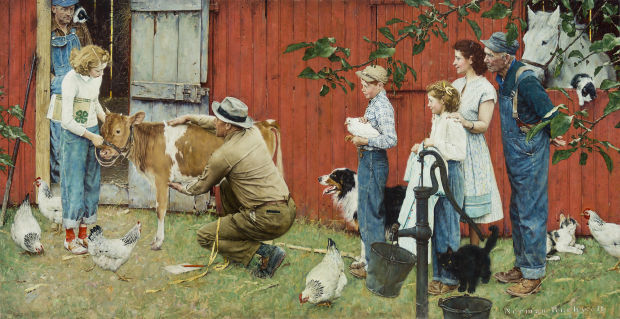
The 70 to 80-hour work week for the average 19th-century laborer in the industrial revolution was actually a deviation from the ways of their medieval predecessors. Arguing for an eight-hour workday was not so much a push for the progressive, but a return to the ways of yore.
Indeed, medieval peasants enjoyed a less rigid workday.
Meals weren’t rushed and the afternoon might call for a nap.
“The tempo of life was slow, even leisurely; the pace of work relaxed,” said Schor. “Our ancestors may not have been rich, but they had an abundance of leisure.”
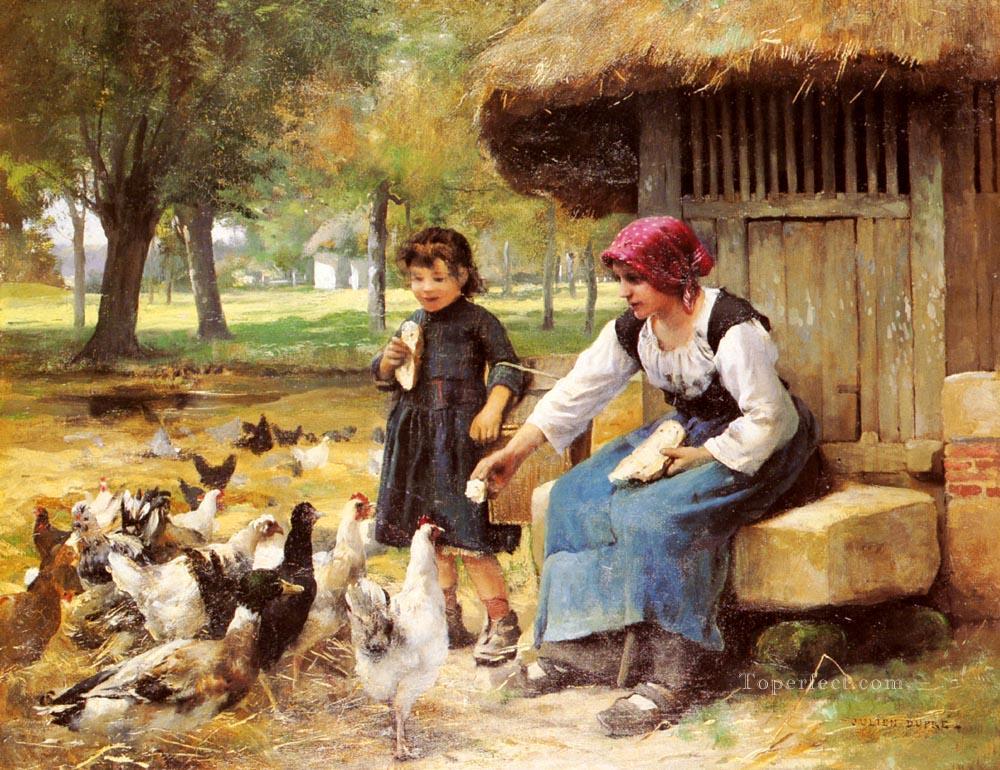
Work hours weren’t as rigid back then due to a variety of factors including season-dependent tasks.
A 16th-century Bishop wrote of the average workday of his time…
“The labouring man will take his rest in the morning; a good piece of the day is spent afore he come at his work; then he must have his breakfast… At noon he must have his sleeping time, then his bever in the afternoon, which spendeth a great part of the day; and when his hour cometh at night, at the first stroke of the clock he casteth down his tools, leaveth his work, in what need or case soever the work standeth.”
While we may be accustomed to images of medieval peasants toiling away from dawn until dusk and be convinced from this that we have it better than they ever did — a 13th-century laborer could have up to 25 weeks off per year.
For reference, the average American worker has 16 days of vacation per year.
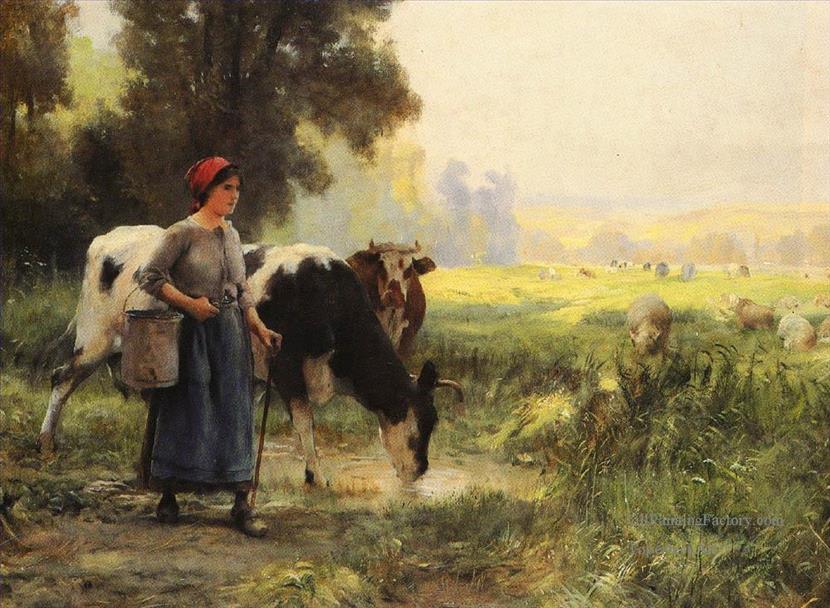
“Consider a typical working day in the medieval period,” said Schor. “It stretched from dawn to dusk (sixteen hours in summer and eight in winter), but, as Bishop Pilkington has noted, work was intermittent…
… called to halt for breakfast, lunch, the customary afternoon nap, and dinner. Depending on time and place, there were also mid-morning and mid-afternoon refreshment breaks.”

Additionally, the medieval calendar was also one of many official Church-going holidays which were always considered mandatory. In total, leisure time in medieval England took up probably about one-third of the year.
The U.S. is the only advanced country with no national vacation policy.

But since the Reagan era, the security of long-term employment has steadily declined.
Our generation has become accustomed to hopping from job to job and adding a part-time gig on top as to combat the fears of a fluctuation economy. With a Great Recession ingrained in our psyche, vacations seem like a luxury.
The United States is the only first-world country without a national vacation policy, after all. Millions work on public holidays and don’t use their vacation days for fear of retribution. With a horrific lack of standardized, easily accessible healthcare — sick days and vacation days often blend together.
According to the World Economic Forum, the Greeks have the longest work week in the European Union (EU). Granted, they’ve struggled with a terrible economy in recent years which could explain the additional effort.
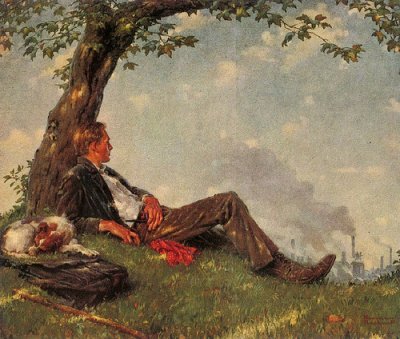
However, Germany is second to last in the EU when it comes to annual hours worked and has a generous work model in place. It is, nonetheless, an economic behemoth. An average German works 1,363 hours per year which goes to show that vacation days might actually improve a nation’s GDP.
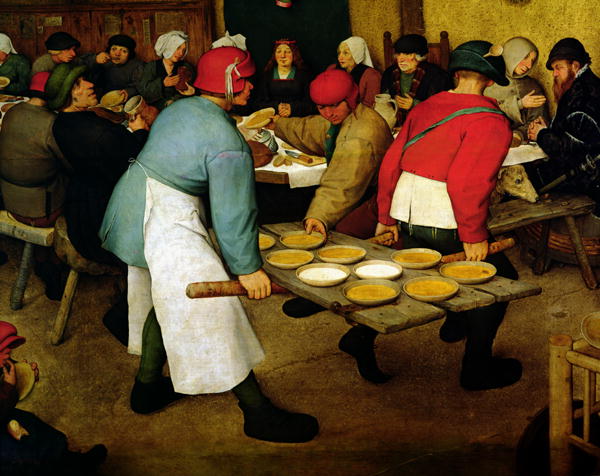
Indeed, according to the U.S. National Library of Medicine, which conducted a nine-year experiment, the frequency of annual vacations is directly “associated with a reduced risk of all-cause mortality” and concluded that “vacationing may be good for your health.”

Unfortunately, it seems as though the United States Congress is getting more vacation days than the average American citizen. According to Thought Co., its members make a base salary of $174,000 and work fewer than half of the days in a year — and this is perhaps not even to mention this years shut down.
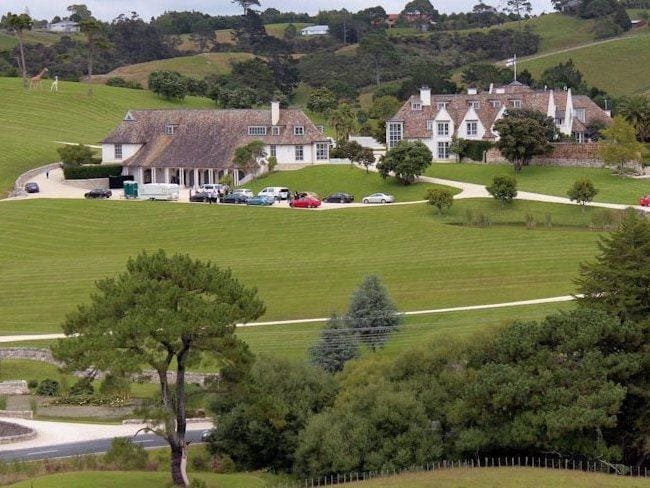
Now…
You would think that any “red blooded” American man would say “take this job and shove it” to their employer for not giving them vacation and sick time, and having to wait a full one year to take it. But that never happens.
American’s don’t do that.
Because…
Most Americans Are Up To Their Eyeballs In Debt
In the United States, it has been common to pay via credit card for almost anything, but the use of credit cards hasn’t been as widely accepted in other places around the world.
A decade ago, you couldn’t pay for much in Germany with them, and the same is true of many European and Asian nations, though they are growing in popularity.
For Americans, credit and debt are simply a way of life.
A large part of American culture is capitalist consumer-driven markets, which means, Americans like to buy stuff, and they often do so via some form of credit. Why wait to buy a new computer when you can pay it off with some interest over the next five years?
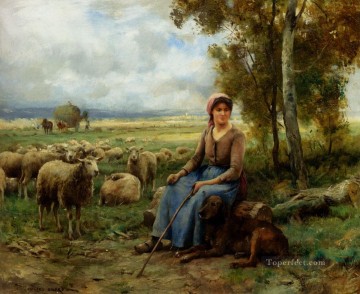
The main reason it’s not a great idea has to do with an accumulation of debt.
Americans buy one thing, then another, and another, and before they know what they’ve done, they owe an average of $38,000 in debt, and the trend is showing an increase.
$38K is already a huge number for most people, but if you add it up, it shows just how deep the nation is in debt.

When you take that average and factor in the population and demographic information, the nation as a whole owes $4,000,000,000,000 in all forms of consumer debt.
That number includes credit card debt, which has an average interest rate of 17.41%. The bottom line: Americans are drowning in debt, and the problem is worsening.
Americans cannot get the lifestyle they deserve because they are chained to dept, like indentured serfs working on a plantation.
Being indentured slaves is problematic. It creates a situation whereas you have a stratification of society.
- Indentured slaves work for the ruling class.
- Ruling class lives a life of ease and comfort.
- If you do not fit into either of those two classes, you become homeless.
Thus, in America…
Homelessness And Wealth Distribution Is A Serious Problem
Homelessness is a problem all over the world, and while you can find it in developed nations like the UK and France, the United States has far more in contrast to other developed Western nations – with the exception of the other oligarchy; the UK.

As of 2018, about 0.17% of the American population was living on the streets, and while that doesn’t seem like a lot, it amounts to more than 553,000 people.
The states with the most homeless people are California, New York, Florida, Washington, Oregon, and Texas; coincidentally, most of these states have higher amounts of population density, but they also have some of the wealthiest people in the country.

Homelessness is a serious problem, and fortunately, there are people and organizations working to help provide temporary and permanent housing to displaced Americans.
The most obvious question is if the United States is the wealthiest nation in the world, why are so many people homeless?
The complicated economics of the States doesn’t offer a simple answer, but there is an obvious disparity between the wealthiest people and the folks who have nothing.
Because the number of Americans who are insanely wealthy remains low, the top 1% of wealthy Americans hold 40% of the total national wealth.
America is stratified into the Ruler class (Kings) and serfs. Those that do not fit within those two classes are social outcasts and homeless.
Now, all of this high concentration of wealth into the hand of a few means that the rest of the people make do with less. Less money is available for repair. Less money is available for healthcare. Less money is available for maintenance, and less money is available for new things.
You can this how the money disappears when you witness the absence of proper resource allocation…
The United States Has A Crumbling Infrastructure

If it took a long time for this page to load and get to the article, you may be somewhere in the United States.
Despite being the country chiefly responsible for inventing what became the Internet, the US languishes behind many other nations in terms of download speeds.
The United States ranks 38th out of 141 nations on the Speed-test Global Index. The country falls just below Portugal and sits on top of Spain. The main reason the US has poor Internet is due to the cost of overhauling the telecommunications infrastructure, but that’s not the only part of American infrastructure that’s lacking; the roads, bridges, dams, water, and power systems are all falling apart, and nobody wants to pay to have them fixed.

The politicians talk about fixing infrastructure all the time, but nothing has come out of it.
Meanwhile, 47,000 bridges are in serious need of repair with the possibility of a catastrophic failure should a rather large pigeon fire some droppings on the wrong platform.

Roads are also a serious problem, and the effect is noticeable if you drive down any major highway in the United States. The Pacific Institute for Research and Evaluation determined that 42,000 road deaths were the result of potholes and other road maintenance issues.
A lack of healthy infrastructure is a “sure fire” sign of a ruler-serf government.
What other indicators are there?
Well, the ruler-serf arrangement is not stable – historically speaking. So efforts are made to control the bulk of the population using laws, rules and strong policing efforts. Laws are made to prevent the people from overthrowing the government. Not to improve the lives of the people.
The way that you can judge the degree of ruler-serf control is…
…is to look at the size of the prison / jail / parole population.
Thus…
The US Has The Largest Prison Population In The World
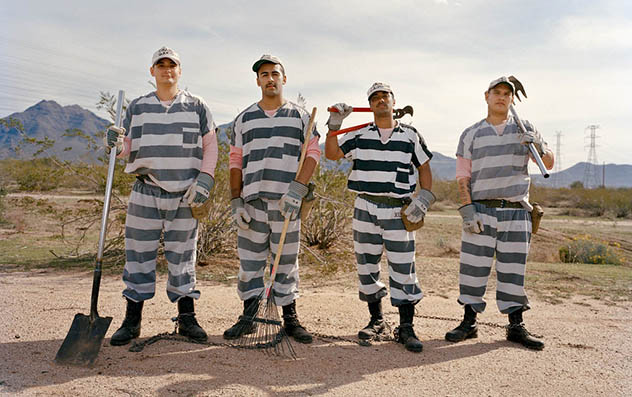
This statistic is widely known, but it’s likely most Americans aren’t aware of just how bad the penal system in the country is.
The United States has more imprisoned people than any other nation on the planet.
For every 100,000 citizens, 724 are in prison, and when you see that number, it may not look large, but for China, their number is only 118 out of 100K.
The number becomes an even bigger problem when accounting for the total population of prisoners in the States, which is around 2.2 million, and the jail occupancy rate is at 107.6%, meaning they are overcrowded and insufficient to house what amounts to the equivalent population of Macedonia.
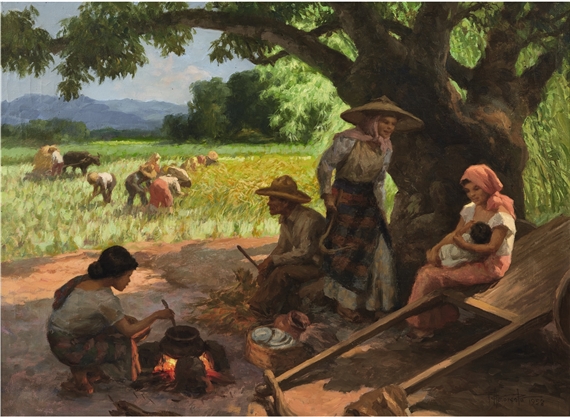
Overcrowding is just one of the many problems facing incarcerated Americans; another major concern revolves around the fact that more than 21% of incarcerated people haven’t been sentenced with a crime. Doing so usually takes a long time.
You see, if a person can’t afford bail, they have to remain in prison until they’re sentenced, even if they are ultimately acquitted of a crime. This essentially means that because everyone is innocent until proven guilty, the United States has more than 460,000 innocent people in jail.
Conclusion
Being a serf in the middle ages, for most Americans, would be an improvement over their lives today.
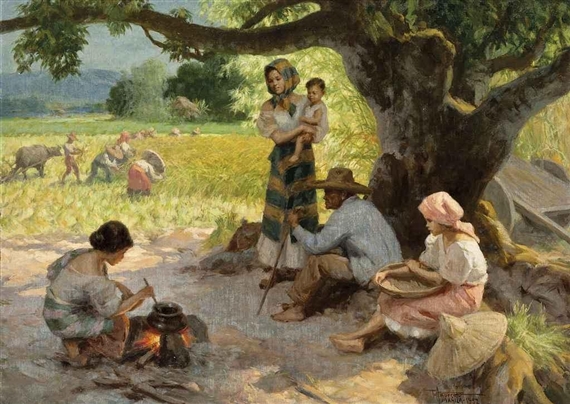
Both situations; serfhood under a modern progressive oligarchy, or serfhood under a King, are similar. The differences lie in technology and lifestyle.
While life in the middle ages didn’t have all the modern inventions and advancements that we take for granted, their pace of life, lifestyle and easy-going happy-go-lucky life had advantages that Americans today can only dream about.
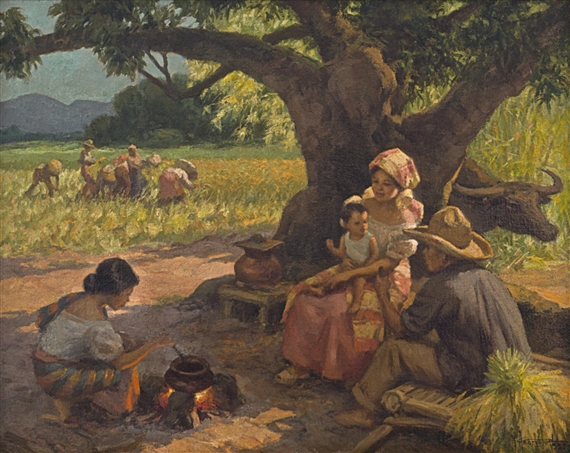
Now, here’s a chuckle…
Buzzfeed Chimes in…
13 Reasons Why Living In Medieval Times Was Better Than Modern Times. Once you got past that whole “plague” thing, life in the middle ages was pretty darn sweet. Adventure back to an epic age hidden from the history books.
- You could settle every argument by jousting.
- Animals could be put on trial for any wrongdoings.
- Immaculately painted portraits > Facebook selfies.
- No silverware? No problem.
- Beer was flowing like water. Literally.
- Words were just cooler back then.
- You could live in castles, cottages, towers, and manors.
- Medieval fashion was the best fashion.
- You could own as many swords as you want and nobody would bat an eyelash.
- You could get away with bathing once a month and nobody would call you out on it.
- The live entertainment was second to none.
- “Knight” was a completely viable career option.
- And, yes, because there were still cats.
If you enjoyed this post, fell free to check out some similar posts on my SHTF index…
SHTF ArticlesArticles & Links
You’ll not find any big banners or popups here talking about cookies and privacy notices. There are no ads on this site (aside from the hosting ads – a necessary evil). Functionally and fundamentally, I just don’t make money off of this blog. It is NOT monetized. Finally, I don’t track you because I just don’t care to.
- You can start reading the articles by going HERE.
- You can visit the Index Page HERE to explore by article subject.
- You can also ask the author some questions. You can go HERE to find out how to go about this.
- You can find out more about the author HERE.
- If you have concerns or complaints, you can go HERE.
- If you want to make a donation, you can go HERE.

